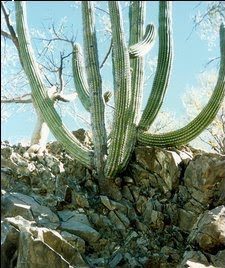Can you imagine 3 marbles floating around the vastness of outer space? If you can, you can imagine the inside of a proton.
Protons, although tiny, are not the smallest particles around, the quark is. To give you an idea of just how small a quark is, imagine a pea orbiting a baseball 20 miles away. That is the atom. Now take that baseball, magnify to the size of the Milky Way, and drop a marble in there. The marble is the quark. Starting to get the picture? I'm just getting a headache! In fact, quarks are so small they may have no size at all! Scientist refer to them as point-like-objects.
Quarks come in 3 different varieties: up, down, charm, strange, top and bottom. Up and down quarks are the ones that make up protons and neutrons. The up quark has a positive charge of 2/3, and the down quark has a negative charge of 1/3. Quarks are never found alone, they always come sets. The most common sets are baryons, which are three quark combinations that include protons and neutrons. The neutron has 1 up quark and 2 down quarks giving it an overall charge of 0. A proton, on the other hand, has 2 up quarks and 1 down quark giving a positive change of 1.
The other four types of quarks are much more massive than up and down quarks, and therefore less stable. The top quark is the most massive of all quarks. It has a mass roughly equivalent to a gold atom, and can remain in existence for more than a billionth of a second!
Here's an fun thing to leave you pondering: according to leading theories, the three quarks in a proton are not alone, but surrounded by "virtual quarks" that blink in and out of existence!
Sources:
World Book Encyclopedia, 1997 Edition
World Book Encyclopedia, 2008 Edition







